 Life & Style
Life & Style

A complex of Chăm towers have been unveiled after three recent excavations were dug up in the central city’s suburban, creating more evidence that the largest Chăm towers had existed in the region from the 10th to 11th century.
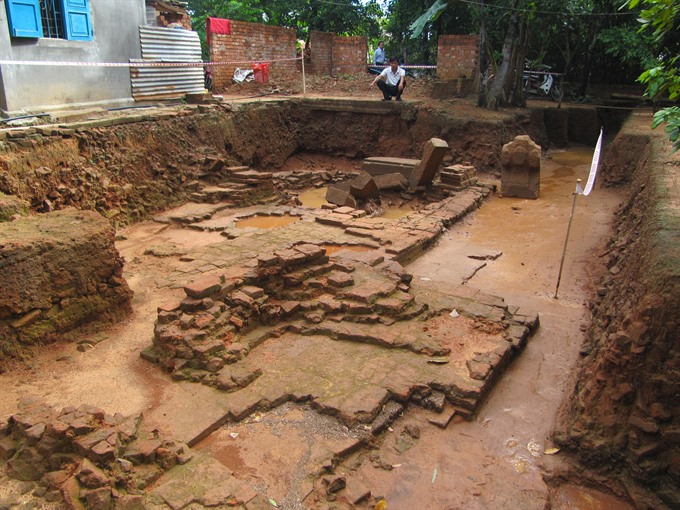 |
| Time team: An excavation site of a Chăm tower in Phong Lệ village in Cẩm Lệ district, 10km away from Đà NẴng city’s centre. — VNS Photo Công Thành |
ĐÀ NẴNG — Historical artefacts dating back a thousand years have been uncovered in the suburbs of Đà Nẵng.
Three excavations saw archaeologists find statues of animals, ceramics and roof tiles.
The finding at Phong Lệ Village is believed to be the site of a Chăm place of worship from the 10th to 11th century.
Chăm is an indigenous group of Việt Nam and Cambodia, who formed an independent kingdom from the 2nd to 17th centuries AD.
Associated Professor Đặng Hồng Sơn, a member of the archaeology team, said the third excavation exposed foundation structures of the main tower (Kalan), a gate tower and long house (mandapan) as well as boundary walls.
Sơn said the team sketched out a map of at least five Chăm towers in the area with boundary walls and a structure of a long house.
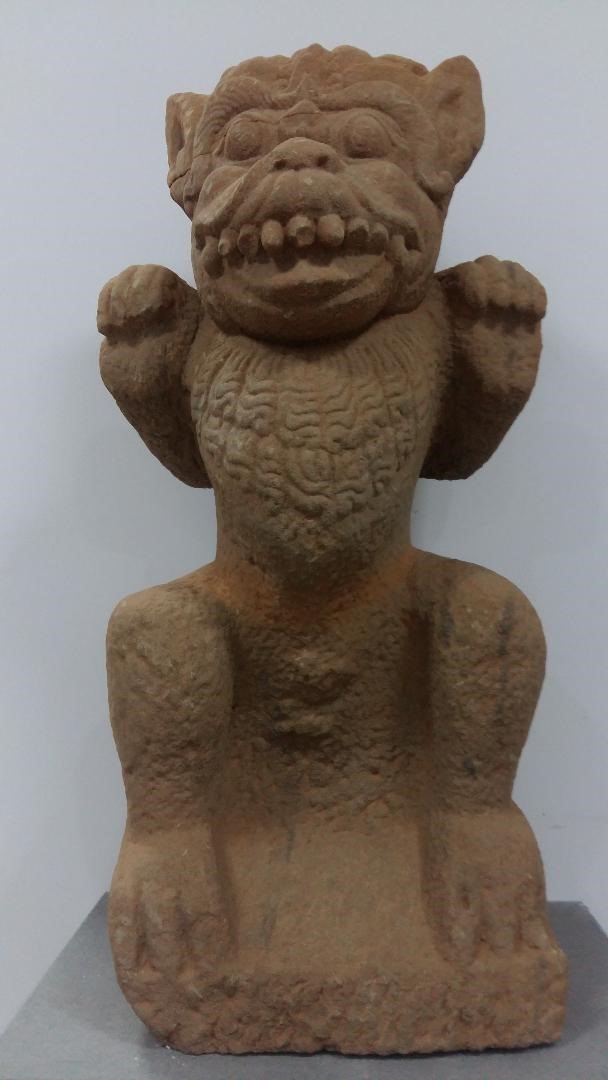 |
| Intimidating: A sand-stone statue of lion was found during an excavation of a Chăm tower in Đà Nẵng city. — VNS Photo Công Thành |
“We expanded excavation under the review and identified ancient items from the previous digging. Foundation structures showed that a typical complex of Chăm towers had been built on a high foundation near ancient flows. The complex would have been situated on the defunct estuary of an old river,” Sơn said.
“We found an intact sand-stone lion (Simha) – which is similar to those found in Trà Kiệu Chăm tower in Quảng Nam Province from 10th-11th century – along with other 22 statues of snakes, elephant, the Garuda (a legendary bird) and the prayer, as well as brick, tile and ceramic (including ceramic objects made by Chăm people and potteries from Sung (China) dynasty),” he said.
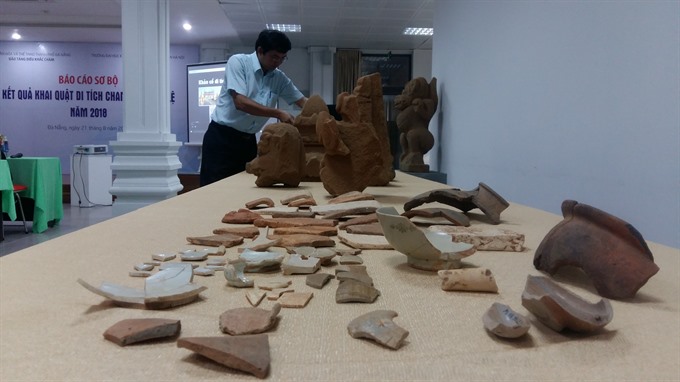 |
| Dig in: Objects discovered from a digging of Chăm towers in Đà Nẵng. — VNS Photo Công Thành |
Sơn said a tube roof tile that was found during the excavation.
“The round tile has a face of people with a Hán script on the forehead,” he said.
“The roof tile style is the same as those discovered in Luy Lâu Citadel (the second century) in the northern province of Bắc Ninh.”
The tile has a person’s face on it, which, according to Sơn, was the first of its kind discovered in central Việt Nam.
He said the tile style is also similar to those found in the Chăm towers in the UNESCO-recognised world heritage Mỹ Sơn Sanctuary in Quảng Nam Province.
According to archaeologists, at least 10 complexes of Chăm towers existed in Đà Nẵng City, but rapid urbanisation in the city might bury many.
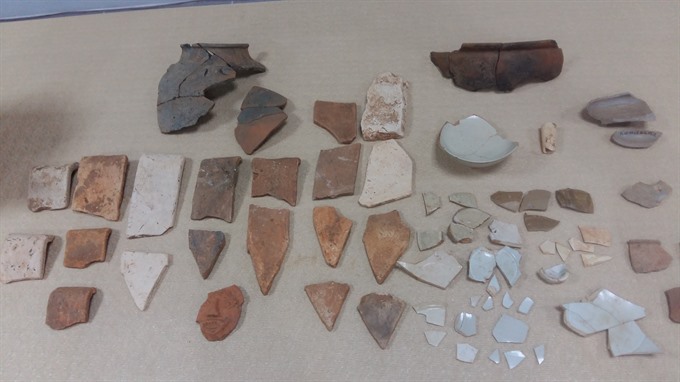 |
| All the pieces matter: Ceramic and brick fragments of a Chăm tower. — VNS Photo Công Thành |
Previous excavations discovered that foundations of many Chăm towers in the city were partly damaged for new constructions of buildings.
Director of the Museum of Chăm Sculpture, Hồ Tấn Tuấn said this was the largest complex of Chăm towers in the area.
This latest excavation is 500m away from the Cẩm Lệ River, and underneath three houses.
“It took us six years to compensate to villagers for removal of buildings before excavation could take place on the site,” the director said.
“The vestige of the old river could be seen as depressed trenches, and archaeologists will continue seeking an old port of a busy waterway trading routes from previous centuries.”
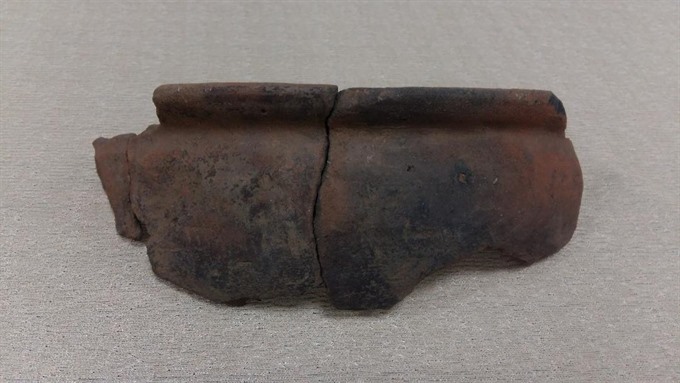 |
| History: A ceramic piece of a collapsed Chăm tower. — VNS Photo Công Thành |
Director of the city’s Culture, Sports and Tourism Department, Huỳnh Văn Hùng, said the city plans to submit procedure for relic status recognisation, and expand protected area for the Chăm tower complex in Phong Lệ Village.
Archaeologist Lâm Mỹ Dung said the city would have more relic sites that were believed to be 3,500 years old and more research and study should be carried out in the future.
Cultural researcher Võ Văn Thắng said the Chăm towers in Phong Lệ Village should be preserved as a practical study site for students and young archaeologists as well as a tourism destination.
In 2012, a team of archaeologists from Đà Nẵng’s Chăm Sculpture Museum and Hà Nội’s University of Social Sciences and Humanities found a Chăm tower foundation in the village – which is one of the biggest such structures ever found in Việt Nam.
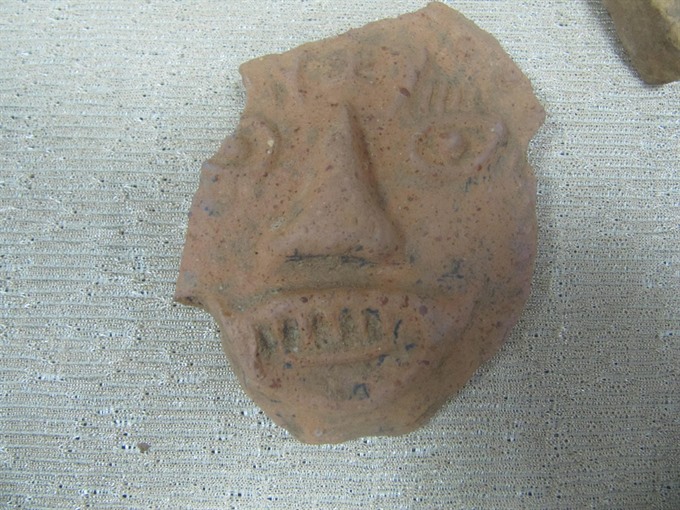 |
| Discovery: A roof tile with a human face is unveiled. — VNS Photo Công Thành |
The Champa kingdom ruled in the central coast region between the 4th and 13th centuries, so many towers remained undiscovered in the area.
The French had partially excavated the tower 100 years ago. Some of the stone statues and relics were displayed at the Chăm Sculpture Museum – one of the most visited site in Đà Nẵng City.
Phong Lệ Village, which is 10km from the city centre, is an historic village with temples, communal houses more than 100 years old, including a 150-year-old temple.
Different excavations in the garden of the Khuê Bắc Communal House in Đà Nẵng in previous years discovered ceramics, stone axes, coins, mollusc shells dating back to the pre-Sa Huỳnh Culture (3,000-3,500 years-old). — VNS

.png)


